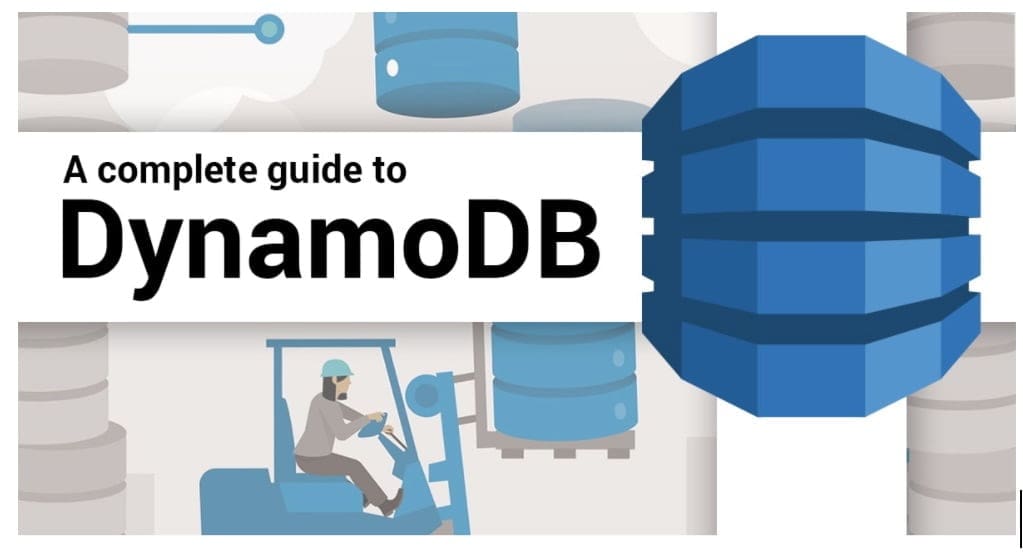The advent of technologies like AI, IoT, and Blockchain has increased the data processing requirements of new-age mobile and web applications. Due to increased data requirements, transactional databases often do not prove to be the best fit. This is where the role of database systems like DynamoDB comes in, as these database systems are specifically designed to manage the new influx of data.
Amazon Dynamo Database or DDB is an Amazon Web Services database system that helps users to leverage the benefits of auto-scaling, in-memory caching, backup, and restore options for all their internet-scale applications. This article will lay out the benefits of using it, outline some use cases and some of the challenges.

What is DynamoDB?
Known for its scalability and latencies, the DynamoDB is a NoSQL database service provided by Amazon Web Services (AWS). The idea behind the development of DynamoDB was to build a database management system (DBMS) that was both cost-effective and easy to use. The positive traits that it has over other database management systems is because it can retrieve any amount of data and serve any request traffic level. The data in DynamoDB is stored on solid-state drives. The benefit of storing data on solid-state drives is that they offer high I/O performance and efficiently handle high-scale requests.
How does DynamoDB store data?
DynamoDB stores data in partitions. A partition is an allocation of storage for a table, backed by solid state drives (SSDs) and automatically replicated across multiple Availability Zones within an AWS Region. The beauty of DynamoDB is that the partition management is handled entirely by DynamoDB and the users never have to worry about managing the partitions themselves.
When the user creates a table, the initial status of the table is creating. During the creating phase, DynamoDB allocates sufficient partitions to the table so that it can handle the provisioned throughput requirements. DynamoDB allows the users to write and read table data once the status changes to active.
DynamoDB allocates additional partitions to a table in the following situations:
- If the users increase the tables provisioned throughput settings beyond what the existing partitions can support.
- If an existing partition fills to capacity and more storage space is required.
- Partition management occurs automatically in the background and is transparent to the applications.
DynamoDB’s Architecture
The architecture of DynamoDB is designed in such a manner that it provides low latency, high availability and durability on a consistent basis.
DynamoDB runs on multiple AWS management servers that help it leverage the solid state drives (SSDs). The storage platform created by these SSDs is high-density and the platform helps in achieving low latency responses to the queries.
Benefits of DynamoDB
Performance and scalability
Scaling databases can prove to be difficult as well as risky. Using it, the developers can auto-scale the database by tracking how close the usage is to the upper bound limits. This auto-scaling ability of DynamoDB allows the system to adjust according to the amount of data traffic. Using DynamoDB, the developers can achieve high performance with reduced costs. DynamoDB is one of the core components of modern business intelligence tools today. The performance and scalability that DynamoDB accords play an essential role in its selection as a database system.
Non-hourly billing model
Many times businesses require systems that have very low access requirements. They do not need a system that can serve millions of users; hence a non-hourly billing model would serve them better. For systems with limited requirements, the pricing model of DynamoDB can drastically reduce hosting costs for applications.
Access to control rules
Effective access control is required as data gets more specific and personal. While safeguarding data, the web developers must also ensure that the system does not create unnecessary bottlenecks. The right people should be able to access data immediately. DynamoDB allows the table owners a higher level of control over data by providing them with fine-grained access control.
Stream data
In DynamoDB, the developers can receive and update item-level data before and after the changes are made in that data. It provides the developers with a time-ordered sequence of the data changes within the past 24 hours. The streams allow the developers to use API to push backups to Amazon S3, maintain an up-to-date read-cache or make changes to a full-text search data store.
Time To Live (TTL)
People who work on database systems know how critical it is to delete expired data. DynamoDB allows the developers to set timestamps on data so that they can quickly delete expired data. When the timestamp expires, the system deletes the data that is marked to expire. The TTL functionality thus allows the developers to keep track of expired data and delete it automatically. TTL helps to remove expired data and thus reduces the costs of storing and manually deleting the expired data.
Easy storage of inconsistent schema items
If the requirement of the database is in inconsistent schemas, then DynamoDB can manage that efficiently. DynamoDB is a NoSQL data model which handles less structured data more efficiently than a relational data model. The NoSQL model makes DynamoDB an ideal candidate for addressing high query volumes having inconsistent schemas.
Automatic data management
A robust database system is an integral part of any cloud analytics system. Amazon DynamoDB has an in-built functionality that creates a backup of the data, allowing developers to save data on the cloud. The on-demand capacity mode of DynamoDB helps the developers to accommodate workload changes.
Cross-region Replication
The cross-region replication function of DynamoDB helps the developersto maintain a DynamoDB master table’s replicas in more than one AWS region. Once the cross-region replication is enabled, identical copies of the table are created in other AWS areas. The system will duplicate any change to all the copies subsequently.
Challenges of Analyzing DynamoDB Operational Data
Having discussed the its importance and benefits, we shall now look at a few challenges of DynamoDB.
Online Analytical Processing (OLAP)
DynamoDB works better with NoSQL data tables. Hence it is not a viable option for online analytical processing and data warehousing systems that usually require vast amounts of data aggregating. Apart from data aggregating, the OLAP systems require the joining of dimensional tables, provided in a normalized or relational view of data. It can prove challenging to get to the data and run large computations with DynamoDB systems.
Querying and SQL
As the focus of it is operational, DynamoDB does not interface with SQL. It proves to be a significant issue as most analysts are familiar with SQL and not with DynamoDB. Many analysts are unable to interact with data and derive meaningful analysis from it.
Indexing is expensive
Developers use indexes to process large data sets quickly. A significant challenge that the developers face with DynamoDB is that the secondary global indexes of DynamoDB require additional capacity provisions. These additional capacity provisions come at an additional cost. With DynamoDB, the developers have to choose between slower processing of queries and additional costs. The extra cost associated with indexing in DynamoDB proves as a hindrance for some companies.
Real-Life Use Cases of DynamoDB
Many companies use DynamoDB to manage their databases; let’s look at some of the most prominent names.
Duolingo
Duolingo is a language learning app that uses the database. The Duolingo database stores and handles around 31 billion data objects on their web server. Duolingo is an app that attracts heavy traffic from users all over the worldDynamoDB has been able to meet the significant data needs of Duolingo efficiently.
Hess Corporation
Hess Corporation is a well-known energy company that works in exploring and producing natural gas and crude oil. Hess Corporation has shifted its E&P(Energy exploration and Production) project onto AWS. Amazon DynamoDB’s operational infrastructure helps the company handle data efficiently. It also helps Hess corporation in separating the data of potential buyers from business systems.
GE Healthcare
GE Healthcare is one of the world’s leading providers of medical imaging equipment. The company provides a unified portal for healthcare professionals located all over the US. GE healthcare uses DynamoDB to increase its customer value, storage, and computation capabilities.
NTT Docomo
NTT Docomo is a Japanese mobile phone service provider having a revenue of more than $42.7 billion. The company required a database management system that would help it manage the data of its millions of customers. Docomo relies heavily on DynamoDB to store different marketing data types like links visited by the users, click patterns, user events, and user profiles. The marketing data sometimes also includes data related to ad targeting, attribution, and real-time bidding.
Here, the data is most important factor and how the huge amount of data is processed and used in the appropriate manner is a matter that’s best left to the experts. Businesses can consult top big data analytics companies to understand how their business can benefit from working on it.
DynamoDB Conclusion
DynamoDB is a reliable non-relational Amazon database management system that helps businesses of all sizes scale their applications. DynamoDB comes with data backup options, restores and secures data, and works well with both web and mobile apps. Apart from financial transactions and healthcare, it can work with all other applications. Amazon DynamoDB proves to be an extremely convenient non-relational database to build event-driven architecture. DynamoDB rectifies any shortcomings by using an analytics-focused SQL layer, making it an excellent asset for users.
